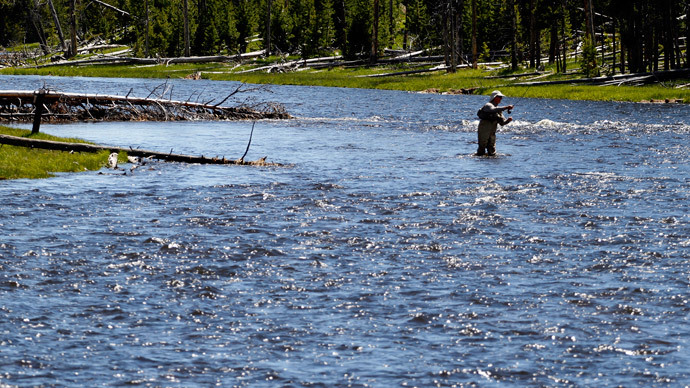EPA unveils new regulations to protect US waters from pollution

The US Environmental Protection Agency has issued a new rule intended to curb pollution in the nation’s waterways. It’s also meant to clarify just which waters the EPA can regulate inside the United States.
Dubbed the “Clean Water Rule,” the new regulations take aim at protecting the streams and wetlands that may not necessarily feed the country’s large water sources but are still vital to providing Americans drinking water. According to the New York Times, the rule will cover 60 percent of the bodies of water in America.
“Too many of our waters have been left vulnerable to pollution,” President Barack Obama said in a statement on the rule, adding that “one in three Americans now gets drinking water from streams lacking clear protection.”
“With today’s rule, we take another step towards protecting the waters that belong to all of us.”
Worth a read: @GinaEPA and @USACEHQ on why we need #CleanWaterRules → http://t.co/fOI342oMxJpic.twitter.com/65axZyTiIP
— The White House (@WhiteHouse) May 27, 2015
Under the Clean Water Rule, water sources for these 117 million Americans will be protected, wrote EPA Administrator Gina McCarthy and Assistant Secretary of the Army for Civil Works Jo-Ellen Darcy on Wednesday.
Specifically, the rule is intended to act as part of the already-existing Clean Water Act of 1972, which allowed the government to regulate large bodies of water – such as the Mississippi River and the Puget Sound – as well as the waterways that feed into them. However, subsequent court cases have created confusion regarding the government’s power to regulate smaller bodies of water, since it’s unclear how the government should define connected waterways.
Under the new rule, the EPA will monitor all tributaries that feature flowing water. If a body of water is 1,500 feet away from another body that is already protected under the Clean Water Act, it will also be protected by pollution regulations.
“This rule will provide the clarity and certainty businesses and industry need about which waters are protected by the Clean Water Act, and it will ensure polluters who knowingly threaten our waters can be held accountable,” Obama said.
READ MORE: Fracking link suspected in presence of cancer-causing gas – report
Notably, the EPA said that existing exemptions for agriculture will remain in place. Water bodies that are still and not flowing, such as ditches, will also remain outside of the EPA’s jurisdiction.
“The final rule doesn’t create any new permitting requirements for agriculture, maintains all previous exemptions and exclusions, and even adds exclusions for features like artificial lakes and ponds, water-filled depressions from construction, and grass swales – all to make clear our goal is to stay out of agriculture’s way,” McCarthy and Darcy wrote.
That assurance was not enough for agricultural and business groups, who oppose the measure. According to the New York Times, the American Farm Bureau and the US Chamber of Commerce are just two of the multiple groups getting ready to sue the EPA over the rule.
“We … remain concerned with the rule and its potential impact on California farmers and ranchers. As [originally] proposed, the rule would have improperly extended federal regulation to isolated waters such as puddles and ditches, and it would have regulated land use under the guise of regulating water,” said Kari Fisher of the California Farm Bureau to the Los Angeles Times.
Read all the documents on the Clean Water Rule here: http://t.co/6H7EjFjecN#CleanWaterRules
— U.S. EPA Water (@EPAwater) May 27, 2015
Meanwhile, Republican lawmakers continued to express their opposition to the EPA’s environmental efforts. Conservatives in both the House of Representatives and the Senate have proposed legislation that would keep the rule from going into effect.
“The administration’s decree to unilaterally expand federal authority is a raw and tyrannical power grab that will crush jobs,” House Speaker John Boehner (R-Ohio) said in a statement.
Environmentalists, however, welcomed the EPA’s rule with open arms.
“We applaud the administration for standing up for the millions of Americans, more than one-third of the population, whose drinking water quality has been at risk for pollution without this rule,” Navis Bermudez of the Southern Environmental Law Center said to the Huffington Post.












